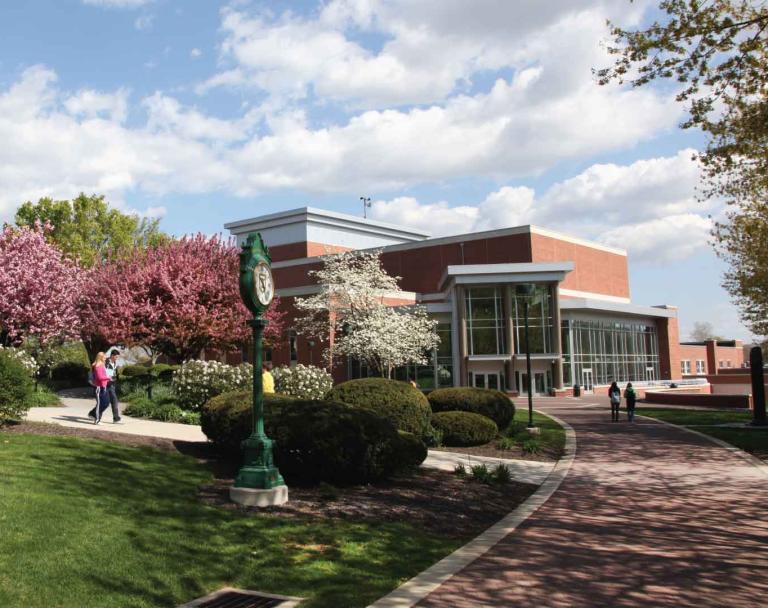Designed for Action: Environmental Science Junior Studies Oysters and Living Shorelines To Help Prevent Erosion

Designed for Action: Environmental Science Junior Studies Oysters and Living Shorelines to Help Prevent Erosion
September 20, 2022At York College, students aren’t just reading textbooks and listening to lectures. They’re working on community projects, solving real-world problems, and using their education to effect change. In Designed for Action, we meet the students who are making an impact outside of the classroom.
Environmental Science major Kayla McVey ’24 wants to do something about climate change.
Kayla, a Calvert County, Maryland native, was a summer intern at Patuxent Environmental & Aquatic Research Laboratory (PEARL). She studied whether oysters can be used in living shorelines to help prevent shoreline erosion in environments such as the Chesapeake Bay area.
Living shorelines use organic materials (such as grass) to prevent erosion, rather than man-made materials like cement. Kayla credits her York College education with helping her conduct this research.
Taking a new path
Kayla didn’t start out in Environmental Science—the major didn’t exist until her sophomore year.
Instead, she came to York as a Pre-Med student. But by the end of her first year, she had decided that track wasn’t a fit for her.
“[I just thought] ‘I don't think that's for me anymore,’” she says.
However, she knew she wanted to do something in science. Specifically, she was interested in the environment.
“I'm sure you've seen the news and everything with the climate change—they're really scary headlines,” she says. “It's really frustrating having to see that and not be able to do anything about it. And so [I said], ‘What about Environmental Science?’”
YCP and research
This summer, Kayla worked with faculty from Morgan State University to study oysters and shoreline erosion. She focused on the ways oysters can be used in low-salinity environments to prevent shoreline erosion.
“Living shorelines work pretty well in the Chesapeake Bay. [However], oyster beds in the living shoreline usually only work in high-salinity environments such as the Chesapeake Bay since it gets water from the ocean,” she says.
“But [a body of water] that has a lower salinity (as of now) can't really support an oyster bed because it's just not the optimal environment. We tried to see if there’s a low-salinity-tolerant oyster line that we can use in a living shoreline.”
The research wasn’t without its challenges.
“Unfortunately, the data that we collected didn’t show any significant difference between the low salinity tolerant line of oysters and the native ones,” Kayla explained. “This was likely due to water contamination since the microorganisms that contaminated our water will outcompete the oyster larvae for food and space.”
Despite the challenges, Kayla believes she was well-prepared for her internship.
“My mentors sent me a lot of stuff to read so I knew what we're researching,” she says. “I feel like if I didn't take [my] Biostats class, I definitely wouldn't understand some of the things that the research is talking about.”
She also says her Ecology classes helped her understand how the oyster-breeding process works.
Turning passion into action
Kayla, who wants to go into environmental policy, believes it’s important for her to be doing environmental research.
“I think it's really important for people who go into policymaking to have an understanding of what they're making policy about,” she says.
She also believes her education in Environmental Science is preparing her for a career in policy later down the road, by requiring her to take non-science electives.
“While you're not in a [Environmental Science] class, you're still learning about the environment, but the non-science part of it.”
Categories
